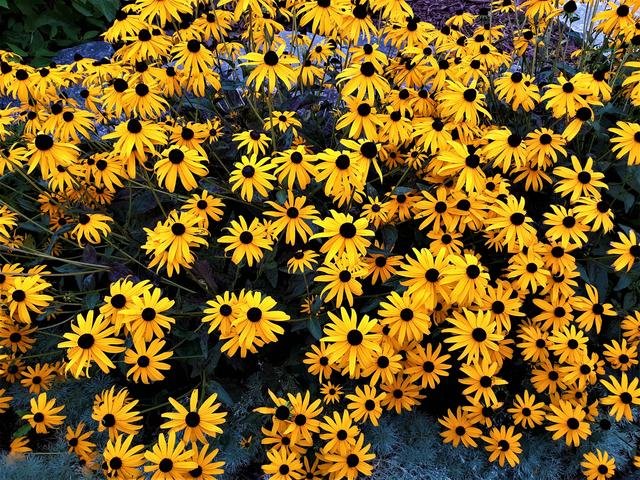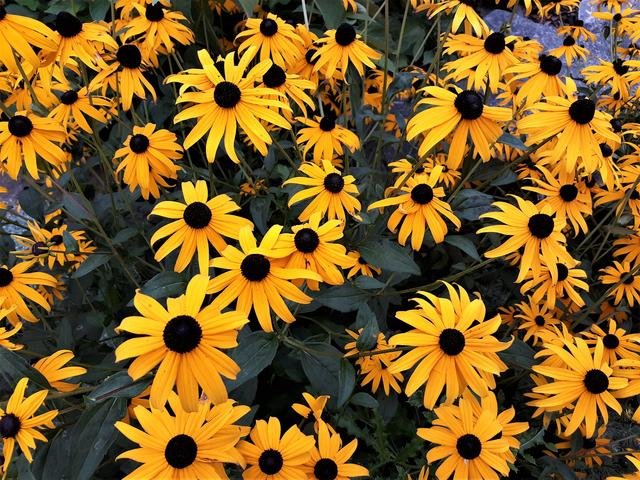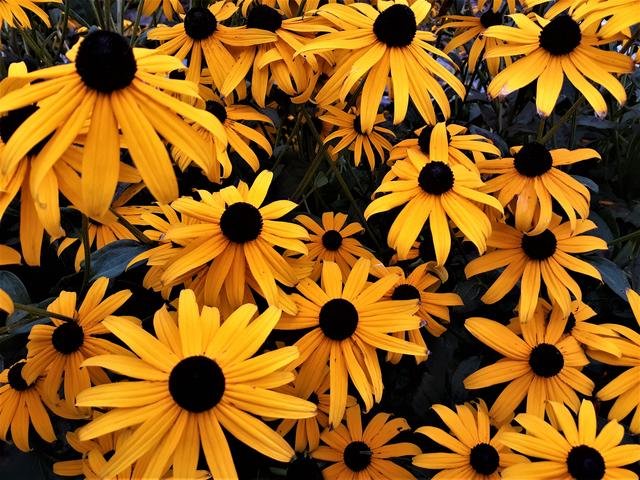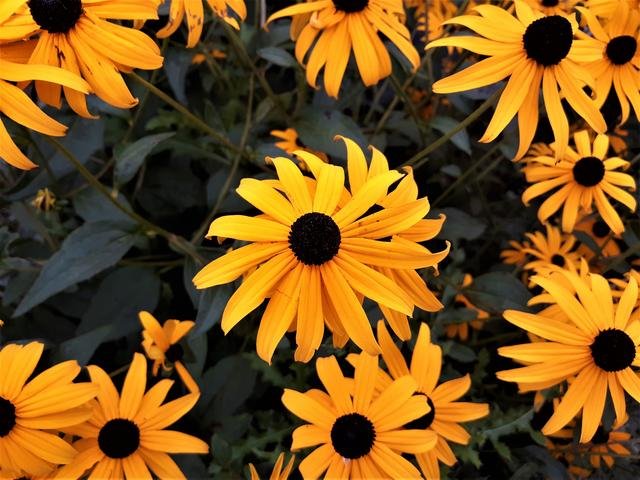Rudbeckia hirta, commonly called black-eyed Susan, is a North American flowering plant in the sunflower family, native to Eastern and Central North America and naturalized in the Western part of the continent as well as in China. It has now been found in all 10 Canadian Provinces and all 48 of the states in the contiguous United States.

Rudbeckia hirta is one of a number of plants with the common name black-eyed Susan. Other common names for this plant include: brown-eyed Susan, brown betty, gloriosa daisy, golden Jerusalem, English bull's eye, poor-land daisy, yellow daisy, and yellow ox-eye daisy.

The plant also is a traditional Native American medicinal herb in several tribal nations; believed in those cultures to be a remedy, among other things, for colds, flu, infection, swelling and (topically, by poultice) for snake bite (although not all parts of the plant are edible).

The black-eyed Susan which also traditionally symbolizes “Justice” makes a very nice cut-flower with a vase life up to 10 days.
Info source

All photograph's by @paradise-found
Thanks for visiting, have a awesome day!!

VOTE @STEEMGIGS FOR WITNESS

WANT MORE UPVOTES?
Join the @gratefulvibes family curation trail
Info at this link: GV Family Trail


